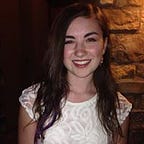Hope for Rahel
A 14-year-old, HIV-positive orphan dreams of her future.
By SHELBY WOLFE| Photojournalist
On one of the many wall murals at AHOPE orphanage a painted tree the color of a green crayon stemmed from the base of a salmon wall. From its swirled and plentiful branches grew painted yellow handprints, blue spirals and rosy hearts. The wall and its surroundings are the home to a fourteen-year-old HIV-positive girl known to wear a heart on a silver necklace, like the ones on the tree. Only, the necklace’s heart was cracked in half.
Her name is Rahel Nunu, and the broken heart round her neck matched the one beating in her chest.
“Rahel got here when she was, I think four,” Mengesha Shibru, Director of AHOPE Ethiopia, said. “She has a mother and she is living in Jima, in the western part of Ethiopia. And she has also three siblings, two boys and one girl. The reason her mother gave away Rahel is economic.”
Without proper documentation and being the oldest child at AHOPE, her chances for adoption are severely, if not completely, diminished.
“I want to be somebody [who is] honored and respected. I want to be an artist, and help people and I know I will get a reward for helping people.” -Rahel Nunu
“I want to try life outside the orphanage,” Rahel said with neither bitterness nor expectation in her voice as she scrubbed her worn, crimson sneakers in a silver sink. “I want to live in a family setting with a father and a mother, at home as a regular family.”
Life as an HIV-positive orphan and maintaining hope for a brighter tomorrow would appear to be mutually exclusive states of being. But, despite how hopeless her situation may seem, Rahel is no damsel in distress.
“I want to be somebody [who is] honored and respected,” Rahel asserted. “I want to be an artist, and help people and I know I will get a reward for helping people.” This is Rahel’s hope and it shines all the brighter in the dim lighting of her confines.
AHOPE orphanage, this place Rahel calls home, functions as the only remaining safe place in the country for HIV-positive orphans. But in AHOPE’s attempt to protect children from discrimination, the orphanage often barricades and secludes them from pursuing a normal life.
According to Rahel, most of the younger students at her school aren’t told they are HIV positive. Even so, a courtyard full of uniformed adolescents at Rahel’s school have been heard echoing their instructor’s megaphoned voice, “We have to respect our parents. We have to take care of HIV.”
These mantras speak to AHOPE’s evolving mission. In its early years the orphanage served as a last-ditch attempt at survival and more generally a hospice for HIV-positive children. But after a breakthrough in life-saving medication in 2005, AHOPE residents are living through their teenage years and beyond, and aims to prepare its residents accordingly.
Shibru claimed, “We have life skill trainings that will help them understand about the virus, about the medicine, about their stutters, how to live a positive living, and their education.”
In this manner, Rahel and other students are taught how to live with their condition through aspects including spirituality, medication and, perhaps most relevantly, discrimination.
“We are trained about HIV discrimination. When we encounter discrimination, how we can protect ourselves,” Rahel disclosed.
One cause of discrimination is symptoms resulting from the new HIV medication. This daily antiretroviral medicine causes life-altering side effects such as headaches, drowsiness, nausea and, most glaringly, skin rashes.
The rashes appear in cracked, rough splotches on the Rahel’s arms and hands.
Rahel’s embarassment of her rashes are evident. “It worries me when people look at me. It itches and is ugly. I was afraid and worried how people would react,” Rahel said.
This, paired with illness caused by the medication, proves a bitter pill to swallow for the sick attendees of AHOPE.
“I got sick because of the conflict between the medicine and the virus,” Rahel confessed. “That’s why I didn’t go to school last week.”
Former AHOPE caseworker, Gethun Bezabin, spoke of the adverse psychological affects of Rahel’s physical ailment, confiding, “When she was sick it totally just changed her. She says that she is feeling death. She’s facing death.”
Rahel finds spiritual solace, however, in a sea of endless red chairs amidst fellow churchgoers: praying, singing and hoping for a future as bright and golden as Rahel’s Youth Club t-shirt.
“When I read [the Bible}” Rahel said, “I learn God created us for a purpose. We should check ourselves to see if we’re fulfilling a purpose.”
Though Rahel’s purpose may not dwell within the confines of the family unit she so desires, Shibru is confident that Rahel “can be whatever she want[s] to be.”
Rahel is confident of this also. When she bows her head to pray, when she puts her pencil to the drawing pad, when she willingly swallows medicine which will cause her pain and rashes, her words “I will ask Him to help me to be hopeful, not to lose hope” ring true.
Everyday this HIV-positive orphan reminds the world that there is hope for Rahel and her broken heart, too.
Designed and edited by Alayna Hoy.
